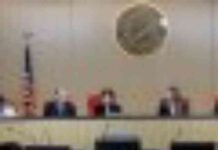The Reuben Lasker, a research vessel operated by the California Cooperative Oceanic Fisheries Investigations (CalCOFI) program, found itself in the midst of a brewing disaster as it sailed off the coast of Manhattan Beach. The ship, on a routine coastal survey, became the first to witness the fallout of the Palisades and Eaton fires that ravaged Los Angeles. Smoke and debris from the wildfires began to blanket the ocean, posing a threat to marine ecosystems.
Unlike rural wildfires, the charred material entering the sea from urban fires contains toxic remnants of homes, cars, batteries, and electronics. This unprecedented pollution could have far-reaching consequences on marine life, affecting the food chain and potentially contaminating seafood. Rasmus Swalethorp, a biological oceanographer at UC San Diego’s Scripps Institution of Oceanography, emphasized the dangers of such pollution in the ocean, soil, and water streams.
CalCOFI, established in 1949 to investigate the sardine industry collapse, has since evolved into a vital program for monitoring the marine ecosystem along the California coast. The research vessel continued its systematic data collection even as wildfires raged, with scientists donning protective gear to shield themselves from the thick smoke. The samples collected during this period provide a unique opportunity to study the impact of urban fires on the ocean environment.
Mark Gold, an environmental scientist at the Natural Resources Defense Council, highlighted the significance of the data collected during the fires. The samples could reveal the presence of toxic metals, PCBs, PFAS, and other harmful chemicals in the ocean, shedding light on the extent of contamination. The first rains following the fires raised concerns about runoff pollution, as debris and ash could flow into the ocean through storm drains, potentially affecting water quality.
Local environmental groups, such as Heal the Bay, issued warnings about contaminated beaches and advised against water contact in specific areas. The Los Angeles County Department of Public Health also imposed beach closures and precautions due to the risk of exposure to hazardous chemicals. Gold recommended refraining from swimming or surfing in the ocean for several weeks after rainfall to minimize health risks.
Julie Dinasquet, a Scripps marine ecologist, expressed concerns about the long-term effects of fire contamination on the marine food chain. The infusion of ash, including asbestos, lead, microplastics, and heavy metals, could disrupt the ecosystem from phytoplankton to fish. The potential bioaccumulation of toxins in seafood underscores the need for continued monitoring and research.
The aftermath of the L.A. fires highlights the ocean’s role as a receptacle for land-based hazards, echoing a troubling history of pollution in the region. The lack of climate resilience in Los Angeles has led to the ocean becoming a dumping ground for various contaminants over the years. Gold emphasized the interconnectedness of land and sea, urging a more sustainable approach to environmental protection to safeguard marine ecosystems.
As scientists continue to investigate the impact of the fires on marine ecosystems, the data collected by CalCOFI and other research programs will be crucial in understanding the long-term consequences of urban wildfires on the ocean. The challenges posed by pollution, runoff, and contamination underscore the need for proactive measures to protect marine life and preserve the delicate balance of the ocean environment.




